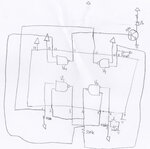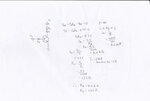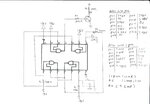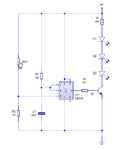KerimF
Advanced Member level 5

- Joined
- May 17, 2011
- Messages
- 1,554
- Helped
- 376
- Reputation
- 760
- Reaction score
- 379
- Trophy points
- 1,373
- Location
- Aleppo city - Syria
- Activity points
- 13,095
In this project, there should be always a current limiting resistor connected in series with the 1 LED or 2.
The only difference in the two cases is that when using 1 LED the resistor value will be higher. And instead of the second LED light, more heat should be dissipated in the current limiting resistor (in my opinion, this is an unnecessary loss).
But perhaps you have just 1 LED (even if you like using 2 LEDs since the battery life will be the same). In this case we will work here with 1 white LED only.
Sorry, I used to verify carefully what I have to work on. It seems you forgot telling me, if your white LED is small or a power one (rated @350mA for example).
The only difference in the two cases is that when using 1 LED the resistor value will be higher. And instead of the second LED light, more heat should be dissipated in the current limiting resistor (in my opinion, this is an unnecessary loss).
But perhaps you have just 1 LED (even if you like using 2 LEDs since the battery life will be the same). In this case we will work here with 1 white LED only.
Sorry, I used to verify carefully what I have to work on. It seems you forgot telling me, if your white LED is small or a power one (rated @350mA for example).





